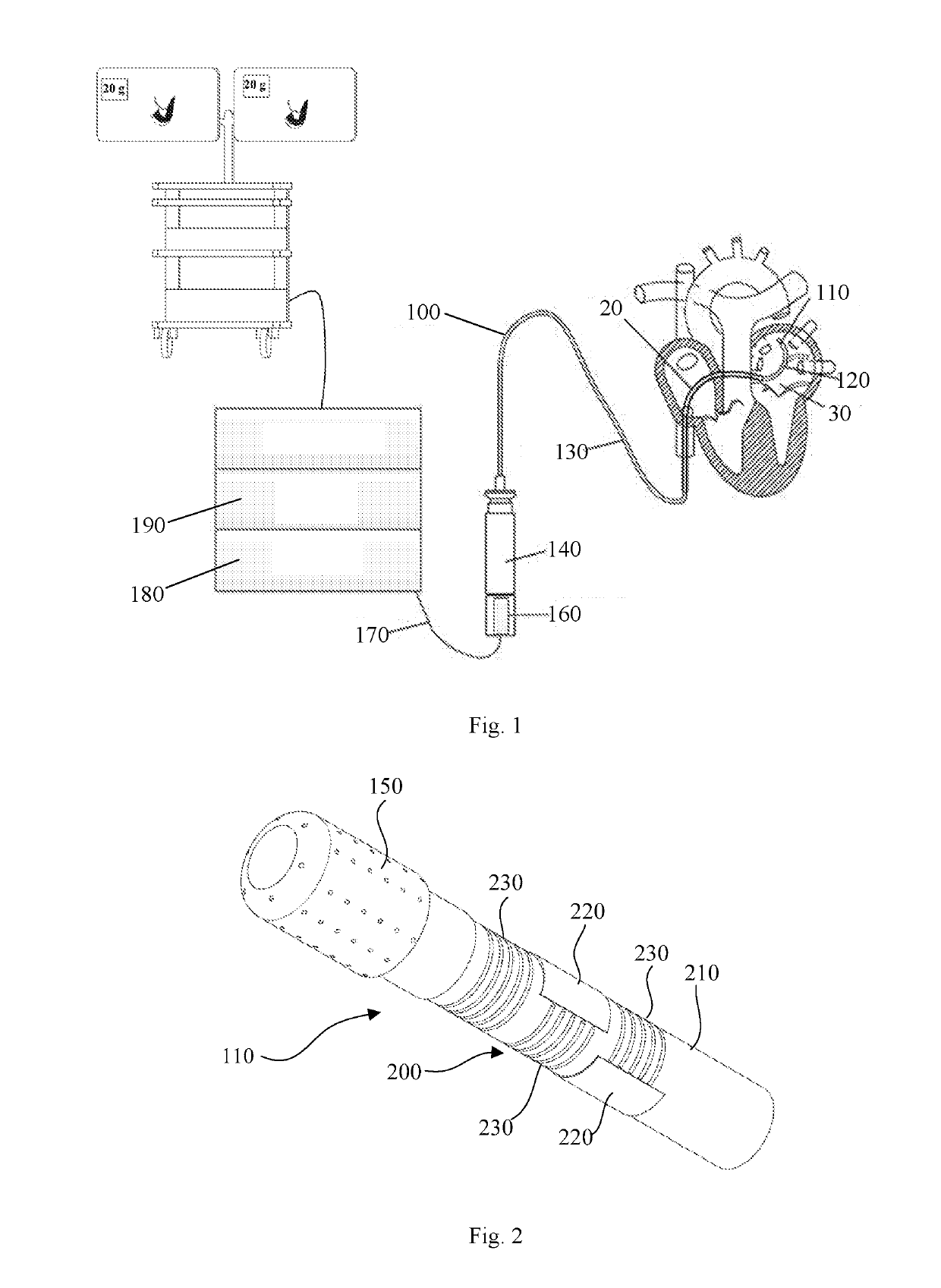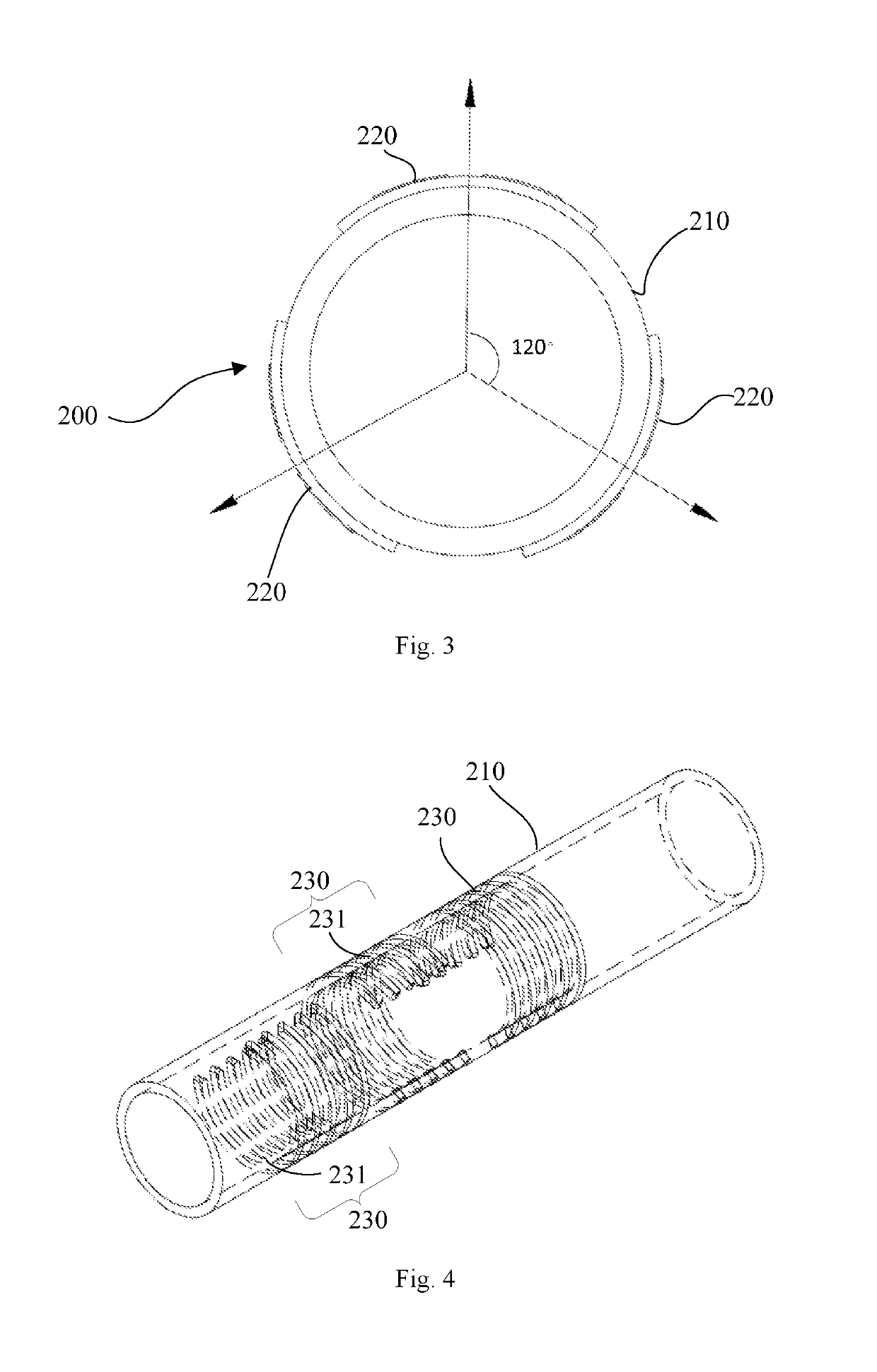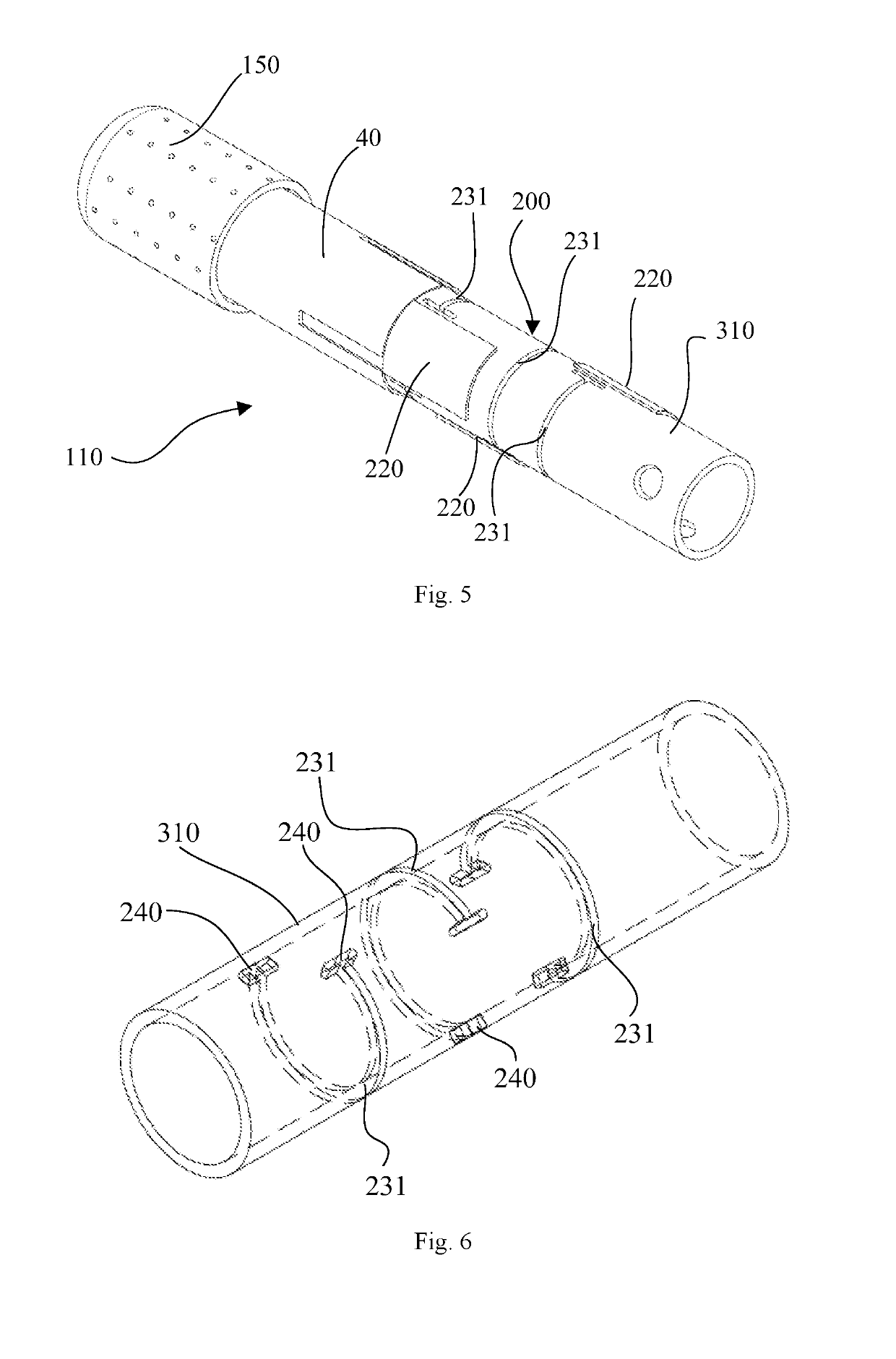Electrophysiology catheter
a catheter and electrophysiology technology, applied in the field of electrophysiology catheters, can solve the problems of increased safety risk, perforation of tissue, and inability to effectively block aberrant electrical signals or nerve conduction, and achieve the effects of improving the contact force measurement accuracy of the catheter distal portion, ensuring safety, and ensuring accuracy
- Summary
- Abstract
- Description
- Claims
- Application Information
AI Technical Summary
Benefits of technology
Problems solved by technology
Method used
Image
Examples
embodiment 1
[0050]FIG. 1 is a schematic illustrating cardiac ablation carried out with an ablation catheter according to Embodiment 1 of the present invention. FIG. 2 is a structural schematic of a distal portion of the ablation catheter according to Embodiment 1 of the present invention.
[0051]Referring to FIGS. 1 and 2, the ablation catheter 100 include, sequentially connected, the catheter distal portion 110, a deflectable section 120, a main body 130 and a control handle 140. The catheter distal portion 110 is equipped with an ablation electrode 150 intended to be brought into contact with a vessel wall or tissue and apply energy thereto for ablation. However, the catheter distal portion 110 is not limited to be equipped with the ablation electrode 150, since a mapping electrode may be alternatively equipped thereon. In application, the ablation catheter 100 will be inserted through a percutaneous sheath 20 and the inferior vena cava into the left atrium 30 to perform ablation there.
[0052]Fo...
embodiment 2
[0070]FIG. 5 shows a structural schematic of a distal portion of an ablation catheter according to Embodiment 2 of the present invention, and FIG. 6 is a structural schematic of an elastic tube according to Embodiment 2 of the invention. In the following description, a width of a first through-slot 231 is defined as a length that the first through-slot spans along the axial direction of the elastic tube, while a length of the first through-slot 231 is defined as a length the first through-slot 231 extends along the circumferential direction of the elastic tube.
[0071]In this Embodiment, the elastic tube 310 also has a hollow portion including arcuate first through-slots 231. Specifically, they may be arcuate slots cut in a single circumferential section of the outer surface of the elastic tube 310. Preferably, the length of each of the first through-slots 231 is two-thirds to four-fifths of the circumference of the elastic tube 310. The first through-slots 231 impart increased elasti...
embodiment 3
[0080]FIG. 8 is a structural schematic of an elastic tube with spiral through-slots according to Embodiment 3 of the present invention, and FIG. 9 schematically illustrates how strain gauges are distributed on the elastic tube according to Embodiment 3 of the present invention.
[0081]As shown in FIGS. 8 to 9, there is / are spiral third through-slot(s) 420 cut in the outer surface of the elastic tube 410. The number of the spiral through-slot(s) may be one, two or more than two. The greater the number of the third through-slot(s) 420 is, the higher the circumferential uniformity of the elastic tube 410 and the lower the elastic modulus thereof will be. In practice, the number of the spiral through-slot(s) may be properly selected according to a strain measurement range of the strain gauges 430. Preferably, when three strain gauges 430 are used, three third through-slots 420 are formed, so that each of the strain gauges 430 is disposed between corresponding two of the third through-slot...
PUM
 Login to View More
Login to View More Abstract
Description
Claims
Application Information
 Login to View More
Login to View More - R&D
- Intellectual Property
- Life Sciences
- Materials
- Tech Scout
- Unparalleled Data Quality
- Higher Quality Content
- 60% Fewer Hallucinations
Browse by: Latest US Patents, China's latest patents, Technical Efficacy Thesaurus, Application Domain, Technology Topic, Popular Technical Reports.
© 2025 PatSnap. All rights reserved.Legal|Privacy policy|Modern Slavery Act Transparency Statement|Sitemap|About US| Contact US: help@patsnap.com



